-
 Bitcoin
Bitcoin $114400
1.32% -
 Ethereum
Ethereum $3499
2.20% -
 XRP
XRP $2.922
4.26% -
 Tether USDt
Tether USDt $0.0000
0.03% -
 BNB
BNB $752.6
1.53% -
 Solana
Solana $161.8
1.64% -
 USDC
USDC $0.9999
0.01% -
 TRON
TRON $0.3267
1.32% -
 Dogecoin
Dogecoin $0.1991
3.02% -
 Cardano
Cardano $0.7251
3.29% -
 Hyperliquid
Hyperliquid $38.32
3.36% -
 Stellar
Stellar $0.3972
7.58% -
 Sui
Sui $3.437
2.74% -
 Chainlink
Chainlink $16.29
3.65% -
 Bitcoin Cash
Bitcoin Cash $545.3
3.70% -
 Hedera
Hedera $0.2482
7.49% -
 Ethena USDe
Ethena USDe $1.001
0.03% -
 Avalanche
Avalanche $21.40
2.02% -
 Toncoin
Toncoin $3.579
1.56% -
 Litecoin
Litecoin $109.3
2.20% -
 UNUS SED LEO
UNUS SED LEO $8.951
-0.18% -
 Shiba Inu
Shiba Inu $0.00001220
2.75% -
 Polkadot
Polkadot $3.613
2.99% -
 Uniswap
Uniswap $9.173
3.78% -
 Monero
Monero $302.6
2.62% -
 Dai
Dai $0.0000
0.00% -
 Bitget Token
Bitget Token $4.320
1.52% -
 Pepe
Pepe $0.00001048
3.40% -
 Cronos
Cronos $0.1314
4.33% -
 Aave
Aave $259.4
3.54%
What are the potential risks of investing in cryptocurrency ETFs?
Investing in crypto exchange-traded funds (ETFs) provides indirect market exposure, diversification, and liquidity compared to direct spot trading of cryptocurrencies, but understanding regulatory landscapes, underlying assets, volatility, and fees is crucial for risk assessment and informed decision-making.
Feb 20, 2025 at 12:06 pm
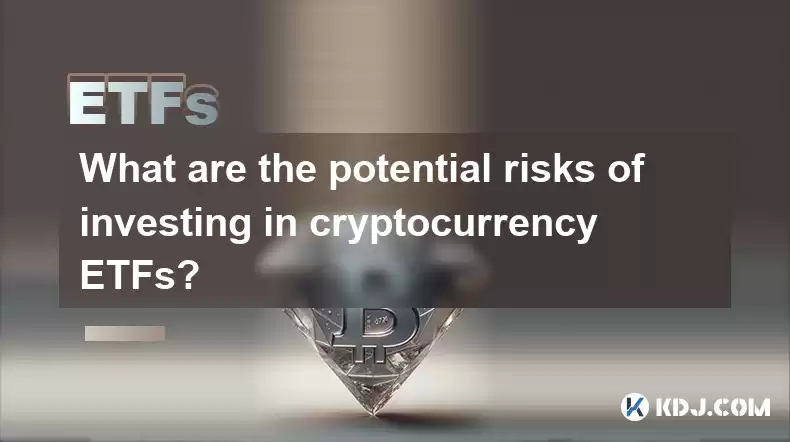
Key Points:
- Understanding the Difference Between Crypto ETFs and Spot Trading
- Assessing the Regulatory Landscape
- Evaluating the Underlying Asses of Crypto ETFs
- Considering Market Volatility and Performance
- Identifying Liquidity and Trading Fees
Understanding the Difference Between Crypto ETFs and Spot Trading
Cryptocurrency exchange-traded funds (ETFs) differ significantly from direct spot trading of cryptocurrencies. ETFs provide indirect exposure to the market by investing in a basket of related digital assets and tracking the underlying asset's performance. They are traded on traditional stock exchanges, offering advantages such as diversification, ease of purchase, and liquidity.
Unlike ETFs, spot trading involves directly buying and selling cryptocurrencies on exchanges, like Coinbase or Binance. It offers more flexibility in selecting specific assets and allows for active trading strategies, but also conlleva higher risks and requires greater knowledge and expertise.
Assessing the Regulatory Landscape
The regulatory landscape for crypto ETFs is still evolving globally. Some jurisdictions, such as the United States, have approved a handful of ETFs with strict requirements regarding asset eligibility, underlying infrastructure, and investor protections. Other regions, including Europe and Asia, have adopted more cautious approaches, with varying rules and guidelines.
Evaluating the Underlying Assets of Crypto ETFs
Understanding the underlying assets of crypto ETFs is crucial for risk assessment. ETFs may hold a mix of spot cryptocurrencies, futures contracts, or derivatives, resulting in different risk profiles. For instance, ETFs tracking spot prices may be susceptible to price fluctuations, while ETFs investing in futures contracts may introduce additional leverage and risk.
Considering Market Volatility and Performance
The cryptocurrency market is highly volatile, and ETFs are subject to these fluctuations. Historical data and market conditions should be considered to assess potential risk and return. Past performance is not a guarantee of future results, and investors should be prepared for losses or underperformance during market downturns.
Identifying Liquidity and Trading Fees
Liquidity refers to the ability to buy or sell assets easily without significantly impacting the price. While ETFs generally offer more liquidity than direct spot trading, not all ETFs are created equal. Some ETFs may have lower trading volumes or wider bid-ask spreads, which can affect pricing and execution.
Trading fees can also impact investment returns. ETFs typically charge annual management fees and other transaction costs, such as broker commissions. These fees should be considered in addition to any fees associated with spot trading, like order book fees, network fees, or withdrawal charges.
FAQs
Q: Are crypto ETFs a safer investment than spot trading?
A: Crypto ETFs provide an indirect, diversified approach to crypto investing, potentially reducing risk compared to direct spot trading. However, they are still subject to market volatility and underlying asset risks.
Q: How do I choose the right crypto ETF?
A: Consider the underlying assets, regulatory framework, liquidity, trading fees, and investment objectives to select a suitable crypto ETF. Seek professional guidance if necessary.
Q: Can I lose money investing in crypto ETFs?
A: Yes, it is possible to lose money investing in crypto ETFs due to market fluctuations or underperformance of the underlying assets. Careful research and risk management strategies are essential.
Disclaimer:info@kdj.com
The information provided is not trading advice. kdj.com does not assume any responsibility for any investments made based on the information provided in this article. Cryptocurrencies are highly volatile and it is highly recommended that you invest with caution after thorough research!
If you believe that the content used on this website infringes your copyright, please contact us immediately (info@kdj.com) and we will delete it promptly.
- Altcoin Rotation, Smart Money, and Investment Trends: What's the Deal?
- 2025-08-04 12:30:11
- Crypto, Pi Network, Movement: Is Pi Coin the Next Big Thing?
- 2025-08-04 12:30:11
- Bitcoin, Metaplanet, and Institutional Confidence: A New Era?
- 2025-08-04 12:50:12
- XRP Price, Ripple CTO, and Tokenized Finance: A New York Minute on Crypto
- 2025-08-04 12:50:12
- Pi Coin: Future Access or Early Adoption Blues?
- 2025-08-04 12:55:11
- Ethereum Liquidations Rock Crypto Market: What's a New Yorker to Do?
- 2025-08-04 13:00:17
Related knowledge
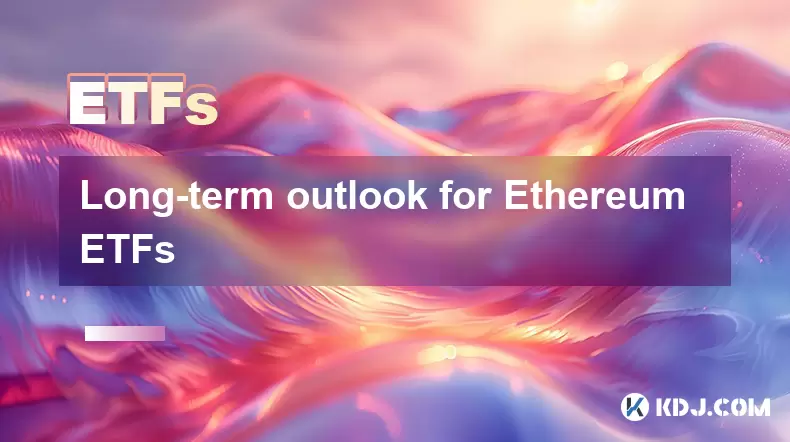
Long-term outlook for Ethereum ETFs
Jul 22,2025 at 06:42am
What Exactly Is an Ethereum ETF?An Ethereum Exchange-Traded Fund (ETF) is a financial product that tracks the price of Ethereum (ETH) and is traded on...
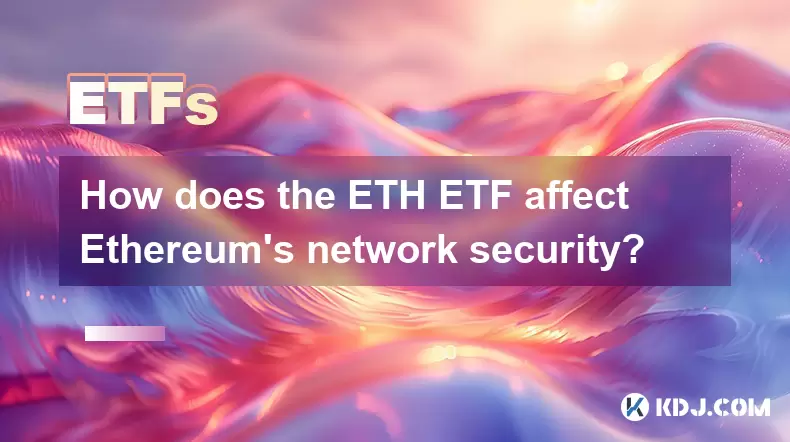
How does the ETH ETF affect Ethereum's network security?
Jul 17,2025 at 01:29pm
Understanding the ETH ETF ConceptAn Ethereum Exchange-Traded Fund (ETH ETF) is a financial product that allows investors to gain exposure to Ethereum ...
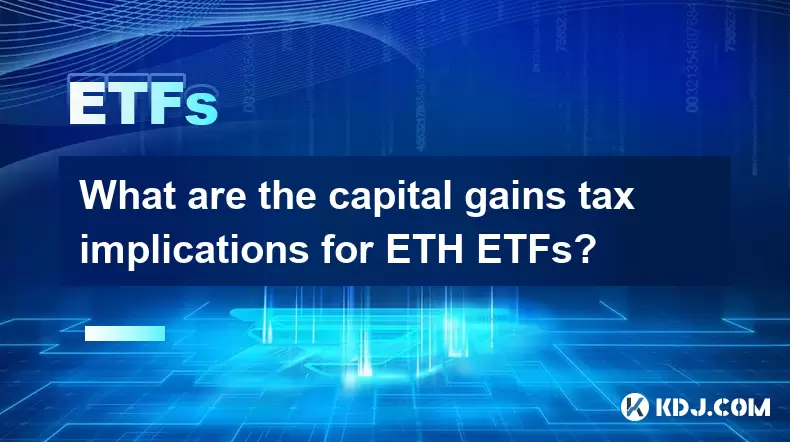
What are the capital gains tax implications for ETH ETFs?
Jul 18,2025 at 08:00am
Understanding Capital Gains Tax in Cryptocurrency InvestmentsCapital gains tax is a tax imposed on the profit realized from the sale of an asset that ...
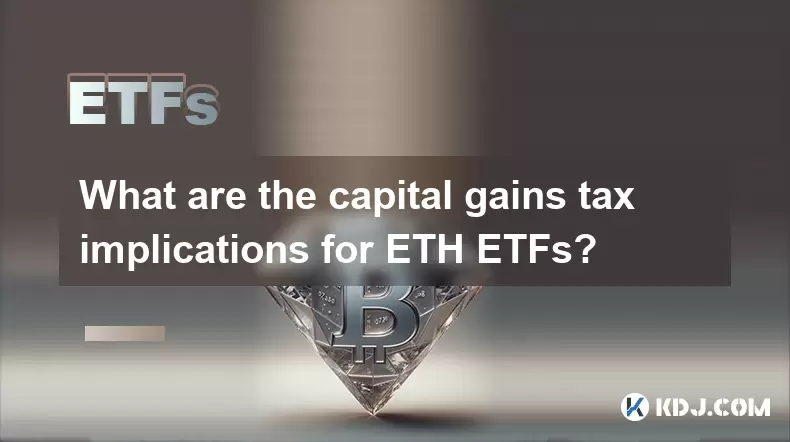
What are the capital gains tax implications for ETH ETFs?
Jul 21,2025 at 11:14am
Understanding ETH ETFs and Their TaxationAn Ethereum Exchange-Traded Fund (ETH ETF) allows investors to gain exposure to Ethereum without directly own...
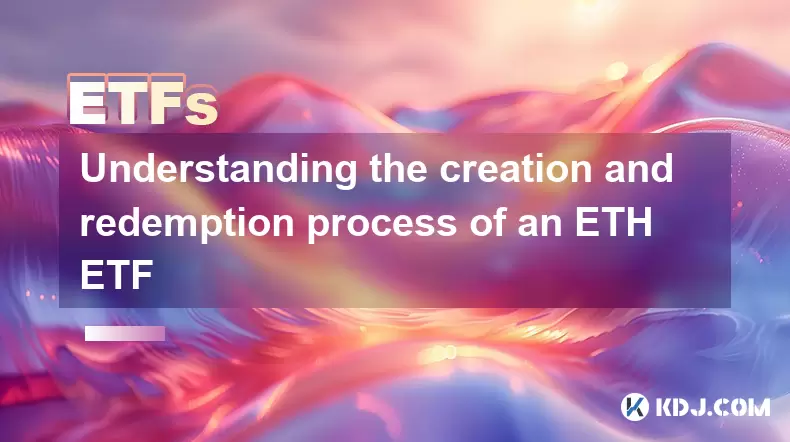
Understanding the creation and redemption process of an ETH ETF
Jul 19,2025 at 07:36am
What is an ETH ETF?An ETH ETF (Ethereum Exchange-Traded Fund) is a financial product designed to track the price of Ethereum without requiring investo...

How to analyze which ETH ETF is the best choice
Jul 19,2025 at 05:01pm
Understanding ETH ETFs and Their RelevanceEthereum Exchange-Traded Funds (ETFs) have emerged as a popular investment vehicle for those seeking exposur...

Long-term outlook for Ethereum ETFs
Jul 22,2025 at 06:42am
What Exactly Is an Ethereum ETF?An Ethereum Exchange-Traded Fund (ETF) is a financial product that tracks the price of Ethereum (ETH) and is traded on...

How does the ETH ETF affect Ethereum's network security?
Jul 17,2025 at 01:29pm
Understanding the ETH ETF ConceptAn Ethereum Exchange-Traded Fund (ETH ETF) is a financial product that allows investors to gain exposure to Ethereum ...

What are the capital gains tax implications for ETH ETFs?
Jul 18,2025 at 08:00am
Understanding Capital Gains Tax in Cryptocurrency InvestmentsCapital gains tax is a tax imposed on the profit realized from the sale of an asset that ...

What are the capital gains tax implications for ETH ETFs?
Jul 21,2025 at 11:14am
Understanding ETH ETFs and Their TaxationAn Ethereum Exchange-Traded Fund (ETH ETF) allows investors to gain exposure to Ethereum without directly own...

Understanding the creation and redemption process of an ETH ETF
Jul 19,2025 at 07:36am
What is an ETH ETF?An ETH ETF (Ethereum Exchange-Traded Fund) is a financial product designed to track the price of Ethereum without requiring investo...

How to analyze which ETH ETF is the best choice
Jul 19,2025 at 05:01pm
Understanding ETH ETFs and Their RelevanceEthereum Exchange-Traded Funds (ETFs) have emerged as a popular investment vehicle for those seeking exposur...
See all articles

























































































